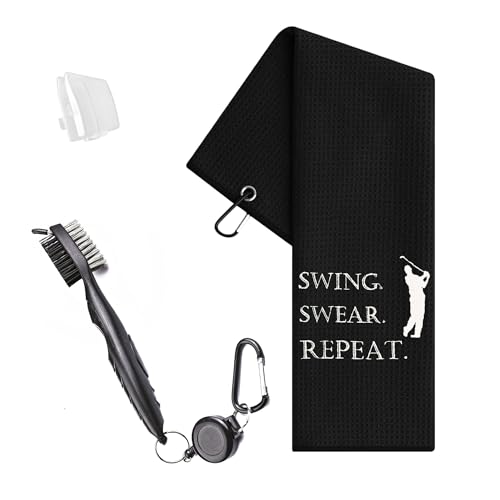Ever wondered what makes the pros’ drives look so effortless? It’s all about the swing speed. But don’t worry, you don’t need to be a pro to master this. Let’s dive into what a good golf swing speed looks like for you.

Whether you’re a weekend warrior or dreaming of the PGA Tour, understanding your swing speed can be a game changer. It’s not just about power—it’s about precision and timing. Stick around to find out how to measure your swing speed and how to use that knowledge to improve your game.
Remember, it’s not just about swinging harder, but smarter. A good golf swing speed is your ticket to more distance, better accuracy, and, most importantly, a more enjoyable time on the course. Ready to amp up your swing? Let’s get started.
Why Swing Speed Matters
When you’re out on the course, aiming to shave strokes off your game, understanding the significance of swing speed becomes clear. This isn’t just about brute strength; rather, it’s an integral facet to mastering control and finesse. Swing speed directly influences the ball’s flight path and the distance it covers. It’s simple physics: the faster the clubhead moves at the point of impact, the farther the ball flies.
Getting to grips with the ideal swing speed for your style means you’ll also sharpen your timing and precision. Perfecting your swing timing enhances ball contact, which results in more consistent shots. In golf, consistency is the golden ticket; it’s what every player strives for each round. As you increase your swing speed while maintaining control, you’ll notice your shots becoming more reliable.
Working on your swing speed isn’t just about improving distance. More speed can also give you a fuller range of clubs to play with for each shot. Imagine needing a 7-iron instead of a 6; that extra control can significantly affect your approach play. Here’s something you might not realize: faster swing speeds can actually reduce side-spin, leading to straighter drives. That means fewer hooks and slices, and we all know what a relief that is.
Remember, fast swing speed is wasted without accuracy. It’s about finding your sweet spot where you can hit powerful shots that are also on target. This balance is what will set you apart on the leaderboard. So next time you’re on the range, don’t just swing for the fences. Work on your technique and gradually build up your speed while keeping your shots in line with your target. It’ll pay dividends when you’re out there competing against the course and the field.
How to Measure Your Golf Swing Speed
Gaining insights into your swing speed can give you a critical edge on the course. It’s simple when you know what you’re doing. Let’s get you up to speed on measuring your swing velocity so you can start optimizing your game.
First up, golf launch monitors. These nifty gadgets are like your personal flight data recorders for every shot you hit. They track your ball from impact to landing, calculating your swing speed among other stats. Don’t have one stashed in your bag? Check your local driving range—many have them installed.
Swing speed radar devices are another great option. They’re portable and specifically designed to capture your swing speed. Just set one up behind your ball and swing away. You’ll get instant feedback on how your driver or irons are performing.
Don’t want to invest in tech? No problem. You can use a simple formula based on the distance your ball travels. Here’s how it breaks down:
- Find a flat spot on the range and hit about 10 balls with your driver.
- Measure the average distance those balls travel.
- Divide that number by 2.3 to estimate your swing speed in miles per hour.
| Distance (yards) | Estimated Swing Speed (mph) |
|---|---|
| 200 | 87 |
| 250 | 109 |
| 300 | 130 |
Remember, tailwind, elevation, and temperature all affect the distance, so make sure you take those into account.
Here’s the deal: tracking progress. Write down your numbers. Notice how they change with different drivers, ball types, or after tweaking your technique. Getting a baseline is key; it lets you set realistic goals and see where you can gain those extra yards.
What do the pros do, you ask? They obsess over this stuff. They’re out there squeezing every bit of data from their swings, always looking to fine-tune. You’ve got that capacity too. Embrace the process and revel in the improvements that are sure to come your way. Keep swinging, keep measuring, and most importantly, keep playing the game you love.
Average Swing Speed for Different Skill Levels
Understanding the average swing speed for different skill levels can help you set realistic goals and work towards improving your own speed. It’s essential to remember that while higher speeds can be advantageous, consistency and control should remain high priorities in your game.
For amateur golfers, swing speeds can vary significantly based on several factors including physical strength, technique, and experience. Here’s a general breakdown:
- Beginners often see speeds ranging from 75 to 95 mph.
- Intermediate golfers typically range between 90 to 105 mph.
- Advanced players, or low handicappers like you, could be swinging anywhere from 105 to 120 mph.
On the professional circuit, PGA Tour players have an average swing speed of around 113 to 115 mph. However, the top professionals can regularly hit between 120 to 130 mph.
When gauging your own swing speed, it’s important to use these numbers as a benchmark and not a strict target. Your focus should be on increasing your speed while maintaining a good balance, posture, and sequencing in your swing. If you do that, the numbers will naturally follow.
Using technology like launch monitors or swing radar devices can be incredibly useful to get an accurate measure of your swing speed. These tools will allow you to see instant feedback on the changes you’re making and how they affect your speed. Keep in mind that weather conditions, club choice, and ball type can all impact your measurements, so it’s best to test under consistent conditions for the most reliable data.
Remember, your swing is unique to you. While comparisons can be helpful for context, the goal is to optimize your technique for the most efficient, powerful, and accurate swing possible. With dedication and smart practice, you’ll be well on your way to reaching and possibly surpassing those averages. Keep pushing your limits and enjoy the journey toward your personal best.

Tips to Increase Your Swing Speed
There’s no secret that as a seasoned golfer, you’re always on the hunt for ways to shave strokes off your game. A key area with massive potential to achieve this is improving your swing speed. Let’s dive into some time-tested tips to help you gain those extra miles per hour.
Strengthen Your Core and Increase Flexibility
It’s crucial to understand that swing speed isn’t just about arm strength; it’s about your overall body power and suppleness. Engage in exercises that enhance your core strength and flexibility—two critical components for a dynamic golf swing. Yoga and Pilates are excellent for improving flexibility, while planks and rotational exercises contribute to a stronger core.
Practice With Speed Training Aids
Speed training aids have become quite popular and for good reason. These tools, such as weighted clubs or resistance bands, are designed to improve your swing mechanics while naturally increasing the speed at which you can swing the club.
Focus on Timing and Rhythm
Don’t fall into the trap of equating faster with simply swinging harder. Your swing’s timing and rhythm are the heartbeats of a swift, smooth stroke. Work on syncing your body movements and creating a fluid motion that naturally accelerates the club head through impact.
Upgrade Your Equipment
Sometimes the issue isn’t you—it’s your gear. Make sure your clubs are the right fit for your stature and swing style. Custom-fitted clubs can make a substantial difference in your control and speed without extra effort on your part.

Swing Drills and Pro Coaching
There’s no better way to enhance your swing speed than by getting feedback from a professional and incorporating specific swing drills into your practice. Drills that focus on lag, posture, and sequencing can drastically improve your ability to generate speed.
Adjust Your Grip
Lastly, examine your grip. A grip that’s too tight can inhibit the wrist hinge necessary for an optimal swing arc and speed. Your grip should be firm yet supple to allow a whipping action in your downswing.
Using Your Swing Speed to Improve Your Game
You’ve learned that dialing in your swing speed isn’t just about bragging rights; it’s about refining your game to the point where each stroke is more effective, more controlled. Imagine shaping your shots, managing your course, and ultimately lowering your scores because you’ve mastered that extra speed you’ve worked so hard for.
Every Yard Counts, and when you increase your swing speed, those extra yards can mean the difference between a difficult second shot and an easy approach. In practice, this could translate to hitting a shorter club into the green, giving you a better chance to be precise with your distance and trajectory.
Keep track of your progress and pay attention to how it correlates with your scores. Start by measuring your baseline swing speed and note it down. As you implement the tips to boost your speed, keep measuring. After all, what gets measured gets managed. Here’s a simple chart you can use:

| Session Date | Average Swing Speed (mph) | Driver Distance (yards) | Notes |
|---|---|---|---|
| 01/03/2023 | 95 | 220 | Felt in control |
| 01/10/2023 | 97 | 230 | Grip adjustment |
| 01/17/2023 | 98 | 235 | Worked on timing |
With a faster swing speed, you’ll not only see gains in distance but you’ll also have new strategies at play. On a par 5 for example, if you can carry those bunkers that used to be out of reach, you’ve just opened up a new potential birdie opportunity. But don’t get too carried away; remember it’s about playing smarter, not just longer.
Practicing with purpose is what it’s all about. Use the increased speed to experiment with shot shapes. Can you draw the ball to avoid hazards or fade it to snugly fit the fairway? Understanding how speed affects your ability to do this is crucial. Focus on the tempo and balance in your swing – more speed does not mean compromising technique. Keep your rhythm consistent, whether you’re driving off the tee or hitting a high-stakes approach shot.










